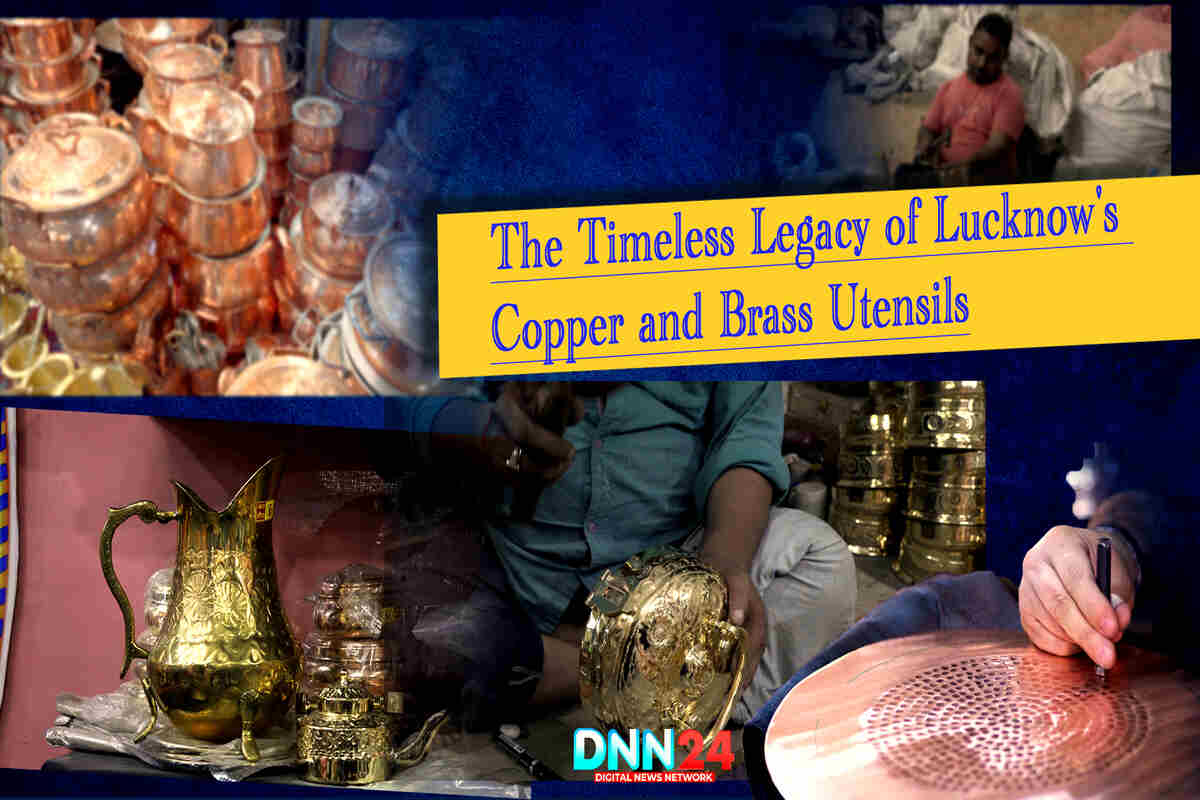Lucknow, the city of Nawabs, is as famous for its food as it is for its exquisite utensils. Known for its rich cultural heritage, the Nawabs had a unique taste for beauty in everything, including the utensils they used. These utensils, made from copper and brass, carry fine craftsmanship and intricate designs such as floral patterns and birds. This artistic tradition still thrives in the old lanes of Lucknow, where artisans continue to practice their ancestral craft. The utensils are not mere tools for cooking; they reflect the glorious past and cultural richness of the city. From large copper deg (pots) to lagan (flat cooking vessels), each utensil has a specific role in cooking special dishes like kebabs, biryanis, and sheermal. Let us explore how these utensils are made, their significance in Awadhi cuisine, and how they continue to symbolize Lucknow’s timeless charm.
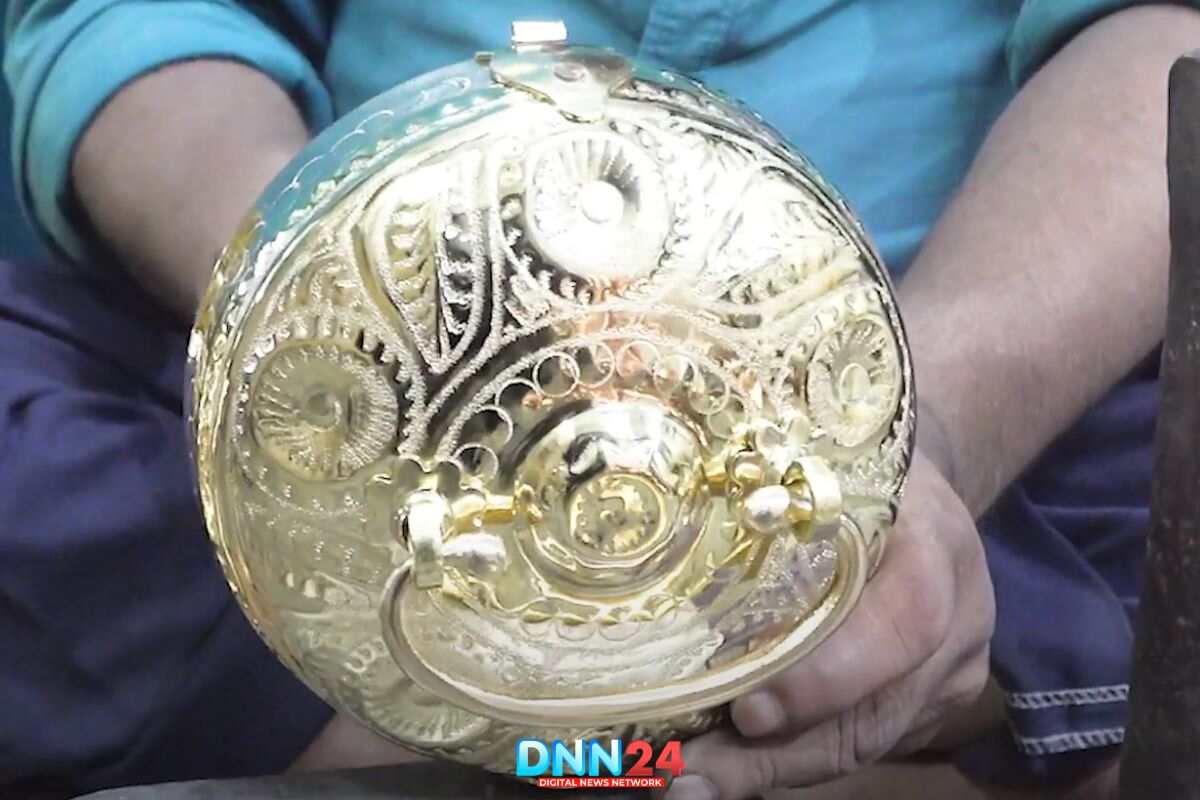
Craftsmanship Behind Copper and Brass Utensils
The making of copper and brass utensils in Lucknow is a time-honored art passed down through generations. Skilled artisans use traditional techniques to create these beautiful and functional items. The process begins with shaping raw copper or brass into desired forms. Large deg and parat are hammered into shape, ensuring both durability and beauty. Once the basic form is ready, intricate designs are engraved on the surface. These designs often include floral motifs, birds, and geometric patterns, all done meticulously by hand. The artistry requires precision, patience, and years of practice. The utensils are then polished to achieve a brilliant shine, which adds to their visual appeal. The attention to detail in each piece highlights the dedication of the artisans, making these utensils not just functional but also decorative treasures. Even today, this craft remains alive in areas like Old Lucknow, where artisans continue to preserve and showcase this ancient heritage.
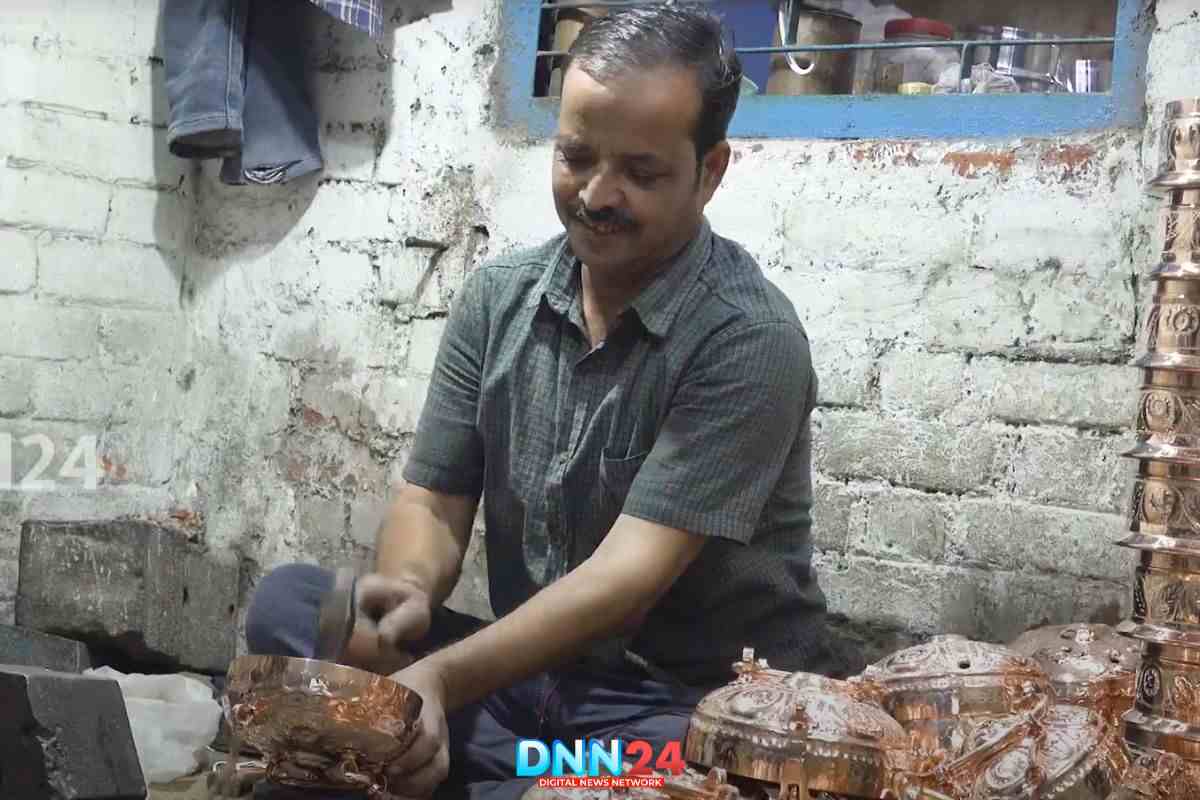
Significance in Awadhi Cuisine and Celebrations
Copper and brass utensils play an integral role in Awadhi cuisine, which is famous for its rich flavors and elaborate dishes. The Nawabs’ kitchens relied heavily on these utensils for preparing traditional recipes. For instance, the lagan is used to knead dough for sheermal and naan, while large deg pots are ideal for slow-cooking biryanis and kormas. These utensils distribute heat evenly, enhancing the flavors of the dishes. Their presence is not limited to everyday cooking; they hold special significance in festivals, celebrations, and weddings. During weddings, copper and brass utensils like lotas (vessels), parats, and pandan (betel nut boxes) are traditionally given as gifts, symbolizing prosperity and cultural heritage. Without these utensils, Awadhi weddings would feel incomplete. They not only add authenticity to the cuisine but also bring a sense of pride and tradition to every feast. Guests are treated to food cooked and served in these exquisite vessels, further elevating the dining experience.
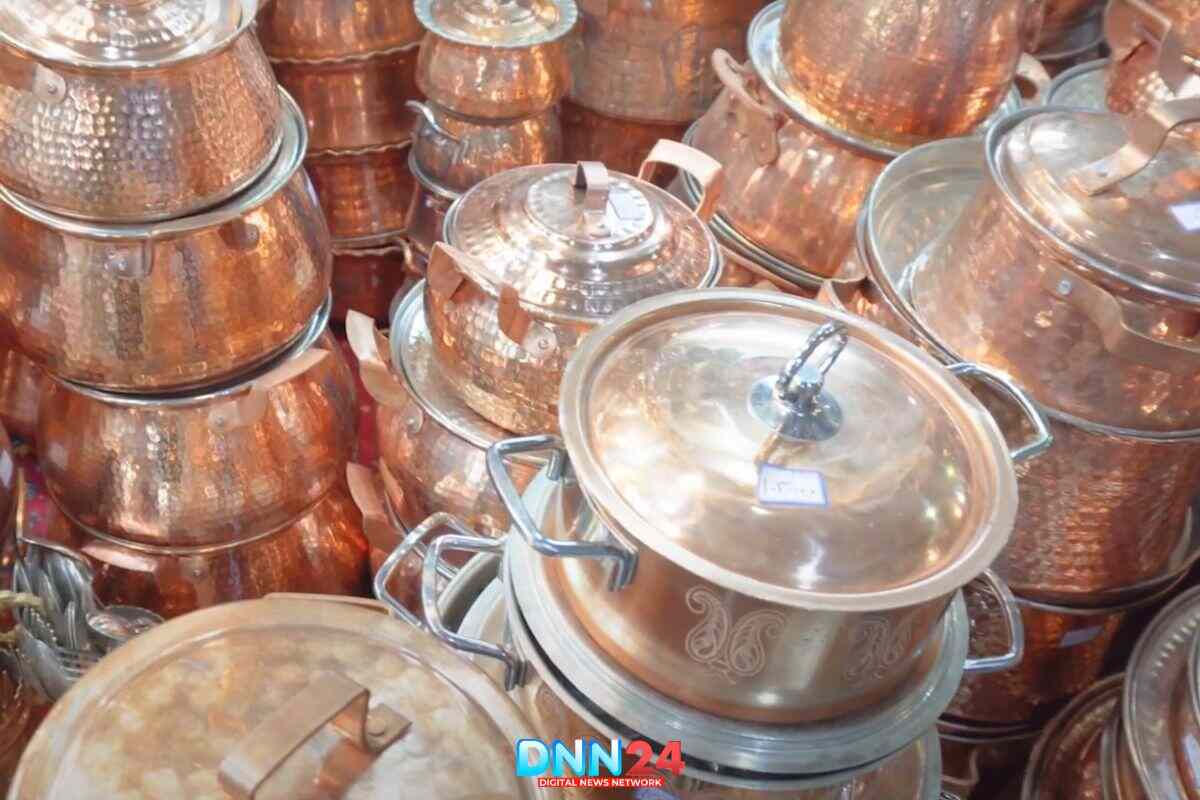
Preserving a Legacy: The Markets of Old Lucknow
The markets of Old Lucknow, particularly Ahiyaganj, are a haven for anyone interested in these traditional utensils. Here, artisans showcase a wide variety of items, ranging from simple parats to intricately designed surahis and pandan. These utensils cater not only to daily needs but also serve as cherished heirlooms and decorative pieces. Tourists visiting Lucknow often take back these unique items as souvenirs, appreciating the craftsmanship and cultural value they represent. Over time, these utensils have gained popularity beyond Lucknow, finding a place in households and hotels across India and the world. However, the survival of this art form depends on continued support for the artisans. Many families have been practicing this craft for generations, but economic challenges and changing lifestyles pose threats to their livelihoods. Supporting local artisans by purchasing these traditional items ensures the preservation of this beautiful craft. The copper and brass utensils are not just products; they are pieces of history that connect the present to Lucknow’s glorious past.

A Reflection of Culture and Heritage
Lucknow’s copper and brass utensils are more than just cookware; they are symbols of the city’s heritage, artistry, and culinary traditions. From the kitchens of the Nawabs to modern-day households, these utensils have stood the test of time, maintaining their importance in cooking, celebrations, and cultural rituals. Their intricate designs and fine craftsmanship reflect the artistic brilliance of Lucknow’s artisans, who have kept this tradition alive for generations. As we admire these timeless pieces, we are reminded of the beauty and elegance of Lucknow’s culture. Preserving this legacy is not only about supporting artisans but also about honoring the city’s history and identity. Whether used for cooking a flavorful korma or gifted during weddings, these utensils remain an essential part of life in Lucknow, ensuring that its cultural heritage continues to shine brightly for years to come.
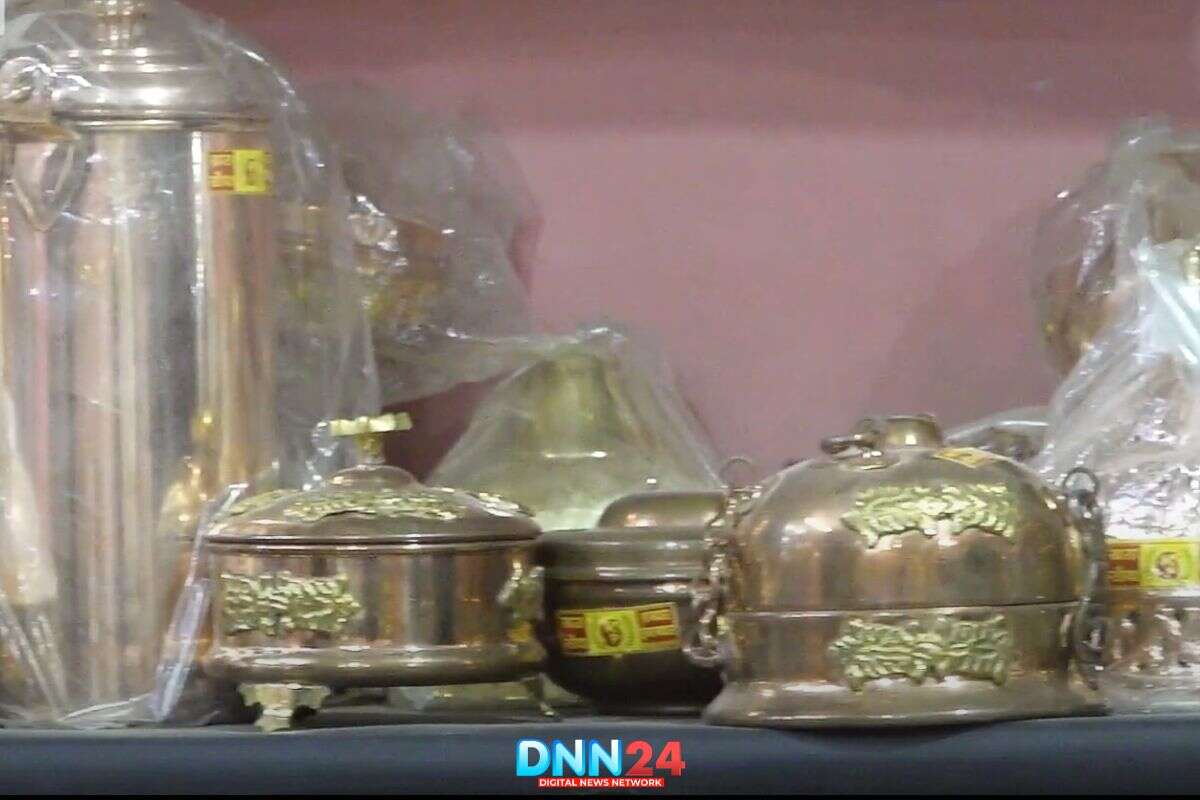
Also Read: Prazna Foundation: A Compassionate Approach to Menstrual Health and Women’s Dignity
You can connect with DNN24 on Facebook, Twitter, and Instagram and subscribe to our YouTube channel.

